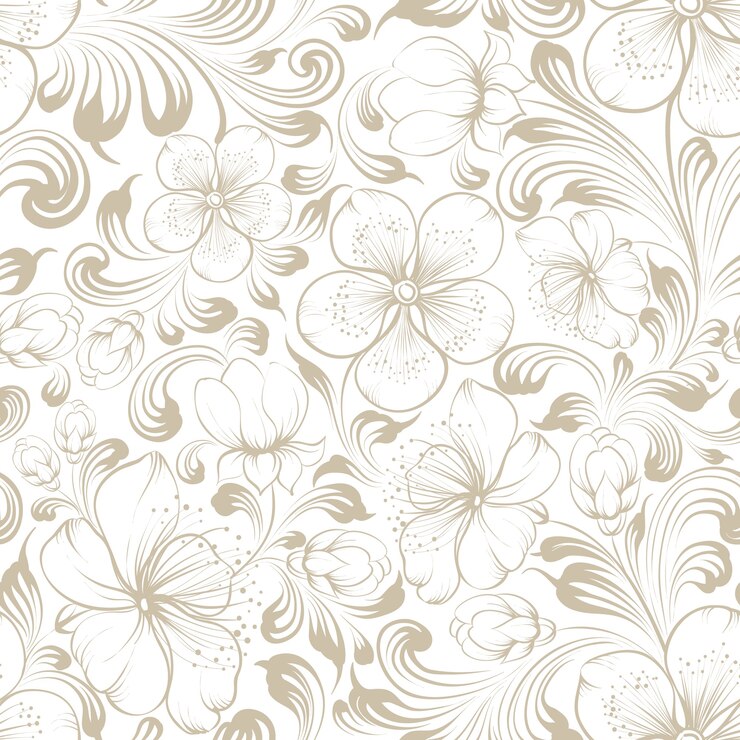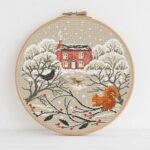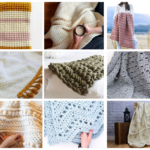Blossoming Threads: The Evolution and Revival of Floral Patterns
Key Takeaways:
- Floral patterns have a rich historical evolution, from ancient symbolism to the Renaissance and the Victorian era.
- The psychology of petals plays a crucial role, influencing emotions through color, form, and cultural symbolism.
- The artistry of floral pattern creation involves inspiration from nature, digital transformation, color selection, and careful consideration of scale and repetition.
- In the contemporary landscape, floral patterns experience a resurgence in fashion, interior design, and digital media, showcasing their adaptability and enduring charm.
I. Introduction
Floral Patterns: A Tapestry of Timeless Elegance
In the vast world of design, few elements possess the enduring charm and universal appeal of floral patterns. From ancient civilizations to the contemporary runway, the delicate interplay of blossoms and leaves has woven its way into the fabric of human expression. This series of articles embarks on a journey through the enchanting realm of floral patterns, unveiling their historical roots, exploring their psychological impact, appreciating the artistry behind their creation, and observing their resurgence in the modern design landscape.
As we delve into this series, readers will be guided through the intricate details that make floral patterns a perennial favorite. Whether gracing textiles, adorning home decor, or inspiring high fashion, these timeless designs have an unparalleled ability to evoke emotions and tell stories. Join us in uncovering the secrets behind the allure of floral patterns, where every petal is a brushstroke on the canvas of design.
II. Roots and Blooms: Tracing the Evolution of Floral Patterns
Floral patterns, steeped in history, carry with them the echoes of centuries gone by. The evolution of these intricate designs mirrors the cultural shifts and artistic preferences of diverse civilizations. From ancient Mesopotamia to the vibrant tapestries of the Renaissance, floral patterns have adorned fabrics, ceramics, and artworks, becoming more than mere embellishments.
From Antiquity to the Middle Ages
In the annals of design, floral patterns find their roots in the artistry of ancient civilizations. The civilizations of Egypt and Mesopotamia embraced floral motifs in their textiles and pottery, using them as symbols of nature’s bounty and fertility. These early patterns set the stage for a rich history of floral design.
As the medieval period unfolded, floral patterns took on new meanings. The intricate tapestries of Europe depicted not only the beauty of blooms but also conveyed allegorical tales and religious symbolism. Roses, lilies, and vines graced manuscripts and fabrics, infusing everyday life with an appreciation for the natural world.
The Renaissance Revival
The Renaissance marked a revival of interest in the natural world, and floral patterns became a prominent feature of art and design. Masters like Botticelli and da Vinci incorporated floral elements into their masterpieces, celebrating the harmony and beauty found in nature. This era witnessed a profound appreciation for the delicate details of flowers, influencing the trajectory of floral design for centuries to come.
Victorian Language of Flowers
Perhaps the zenith of floral symbolism was reached during the Victorian era. In an age when expressing emotions openly was restrained by societal norms, the “language of flowers” emerged. Each flower carried a specific meaning, allowing individuals to convey sentiments silently. Bouquets became a form of communication, and floral patterns in clothing and decor held layers of hidden meanings.
This historical journey lays the groundwork for understanding the enduring appeal of floral patterns. From ancient symbolic motifs to the nuanced language of Victorian blooms, these patterns have been a mirror reflecting the values and aesthetics of each era.
III. Beyond Aesthetics: Unraveling the Emotional Impact of Floral Patterns
Floral patterns are more than just aesthetically pleasing designs; they possess a profound ability to evoke emotions and influence moods. Delving into the psychology of petals unveils the intricate dance between design and human perception.
The Impact of Color and Form
Floral patterns are a symphony of color and form, and this visual orchestra has a direct impact on human emotions. Research indicates that exposure to floral patterns can elicit positive feelings and contribute to an improved mood. The vibrant hues and organic shapes of flowers stimulate the brain, creating a sense of happiness and tranquility. Whether it’s the bold red of a rose or the serene blue of forget-me-nots, each color contributes to the emotional resonance of the pattern.
The form of floral patterns also plays a crucial role. The gentle curves of petals, the dynamic arrangement of blooms, and the overall composition influence how individuals perceive and emotionally connect with the design. It is this synergy between color and form that makes floral patterns a powerful tool for creating atmospheres that range from calming to invigorating.
Cultural Connotations of Flowers
Beyond the universal appeal of nature’s beauty, specific flowers carry cultural and symbolic significance. The rose, for instance, is a global symbol of love and passion, while the lotus holds deep spiritual meaning in many Eastern cultures. Understanding these cultural connotations adds layers of meaning to floral patterns, allowing designers to communicate subtle messages through their creations.
The Therapeutic Touch of Floral Patterns
The therapeutic benefits of exposure to nature are well-documented, and floral patterns provide a gateway to bringing nature indoors. Whether it’s in home decor or personal accessories, the presence of floral designs contributes to creating spaces that feel refreshing and revitalizing. In healthcare settings, floral patterns have been incorporated to reduce stress and promote a sense of well-being.
Understanding the psychology of petals allows designers to harness the emotional impact of floral patterns intentionally. Whether it’s creating a serene bedroom sanctuary or a vibrant fashion statement, the nuances of color, form, and cultural symbolism come together to create designs that resonate on a deeply human leve
IV. The Artistry of Floral Pattern Creation
Creating a captivating floral pattern is a meticulous process that blends nature’s inspiration with human craftsmanship. In this section, we explore the artistry involved in bringing floral patterns to life – from the initial concept to the final creation.
Inspiration from Nature
The journey of a floral pattern begins with an intimate connection to the natural world. Designers draw inspiration from the diverse shapes, colors, and textures found in flowers. Whether it’s the delicate petals of a daisy or the bold geometry of a sunflower, each bloom contributes to the conceptualization of the pattern. This initial stage involves sketches and studies that capture the essence of nature’s beauty.
From Sketch to Digital Canvas
With the concept refined, designers transition to transforming their sketches into digital or traditional mediums. Advanced technologies allow for precise detailing and scalability, ensuring that the floral motif can be adapted to various applications without losing its integrity. Digital tools provide a platform for experimentation, enabling designers to manipulate and refine the pattern until it achieves the desired visual impact.
For those who embrace traditional craftsmanship, techniques such as block printing, embroidery, and hand-painting add a unique touch of human artistry to the floral pattern. Each brushstroke or stitch becomes a testament to the designer’s skill, infusing the pattern with a tactile and authentic quality.
Choosing the Color Palette
The choice of colors is a critical aspect of floral pattern creation. Designers carefully select a palette that complements the overall aesthetic and evokes the desired emotions. The color scheme can range from soft pastels for a delicate and elegant look to vibrant and bold hues for a lively and dynamic design. The interplay of colors enhances the visual impact of the floral pattern, ensuring it resonates with the intended audience.
Scale and Repeat
Consideration of scale and repetition is crucial in the creation of floral patterns. The design must be scalable to fit different surfaces and sizes seamlessly. Whether it’s a small, intricate pattern for accessories or a large, bold motif for wallpaper, designers ensure that the floral pattern maintains its allure across various applications. The artistry lies in finding the right balance between intricacy and simplicity, creating a pattern that captivates without overwhelming.
V. Blooming Trends: The Contemporary Relevance of Floral Patterns
As we stride into the 21st century, floral patterns continue to captivate and evolve, seamlessly integrating into modern aesthetics and design trends. This final section explores the resurgence of floral patterns in contemporary contexts, from high fashion runways to digital media.
Fashion Flourish
The cyclical nature of fashion ensures that trends from the past often find their way back into the limelight. Floral patterns, with their timeless appeal, have experienced a remarkable resurgence in the fashion world. Designers across the globe incorporate floral motifs into their collections, whether in the form of delicate embroidery on evening gowns or bold floral prints on casual wear. This fusion of classic elegance with modern silhouettes creates a captivating synergy, making floral patterns a perennial presence on the runway.
Interior Design Renaissance
Floral patterns have also found a renewed home in interior design. From wallpapers to upholstery, home decor enthusiasts are embracing the beauty of blossoms to create spaces that exude warmth and vitality. The versatility of floral patterns allows them to seamlessly integrate into various design styles – from the simplicity of minimalism to the eclecticism of bohemian chic. The result is homes that bloom with a timeless charm, where nature’s patterns become an integral part of the living environment.
Digital Blooms
In the digital age, floral patterns transcend physical mediums and bloom across the virtual landscape. Digital artists leverage the flexibility of virtual platforms to experiment with innovative interpretations of floral motifs. From intricate digital illustrations to animated floral patterns, the boundaries of creativity are pushed, offering a fresh perspective on the timeless beauty of nature. Social media, websites, and digital art platforms showcase the adaptability of floral patterns in capturing the attention of the online audience.
VI. Conclusion: A Flourishing Future
In conclusion, the contemporary resurgence of floral patterns highlights their enduring and adaptable nature. Whether gracing the catwalks of fashion capitals, adorning living spaces, or blossoming in the digital realm, floral patterns continue to be a source of inspiration and aesthetic delight. Their ability to seamlessly blend the classic with the modern ensures that the allure of floral patterns will continue to flourish, evolving with the ever-changing currents of design and leaving an indelible mark on the tapestry of human expression.
As we embrace the future, the floral pattern stands as a testament to the enduring beauty found in nature, transcending time and trends, and continuing to bloom in the creative landscape.


